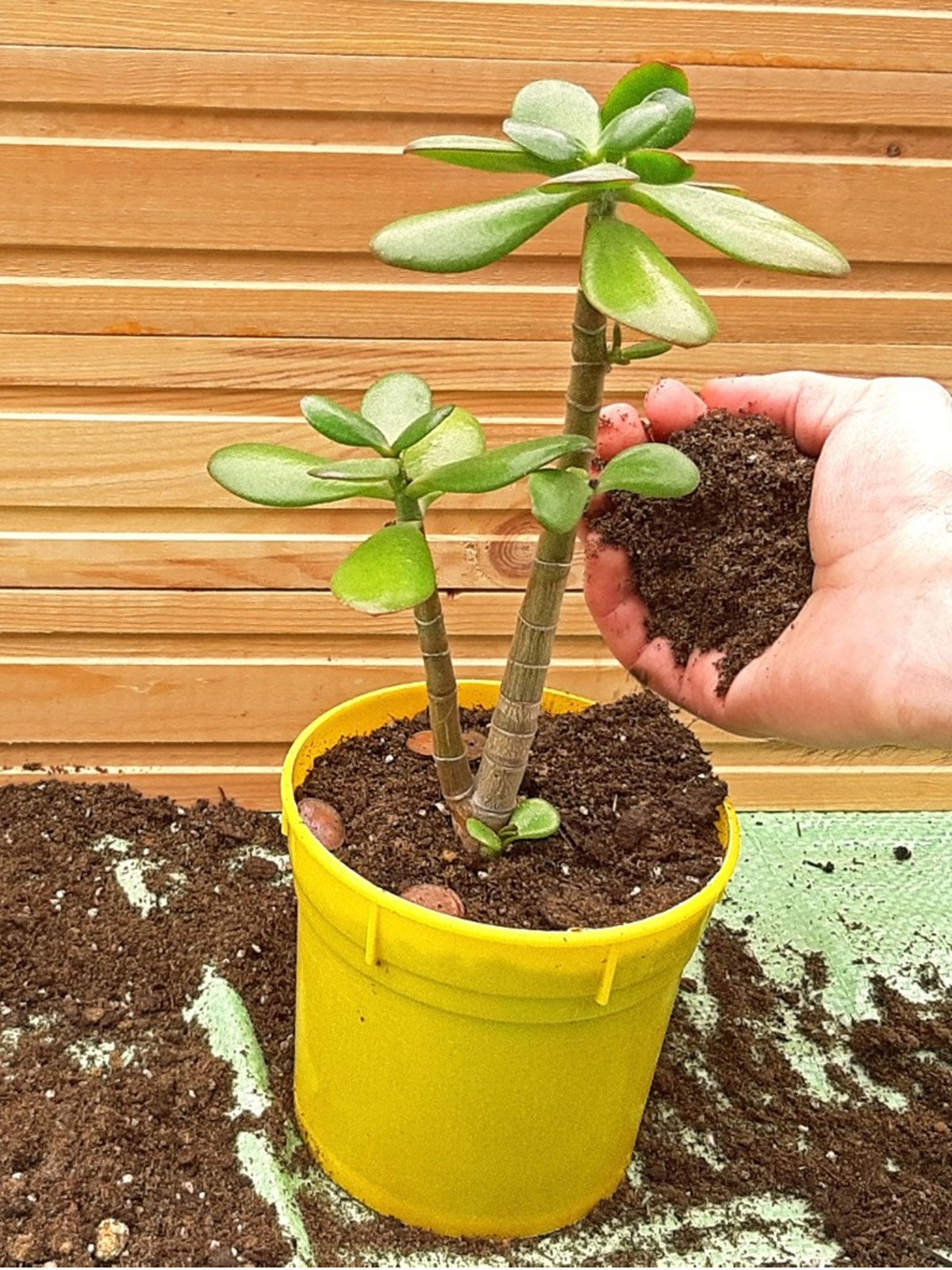Repotting Jade Plants: Learn How To Repot A Jade Plant


Jade plants are among the most popular of succulent plants for both indoors and outside. There are many types of jade plants. If you have one that seems to be outgrowing its container, it might be time to consider jade repotting.
When Should I Repot Jade Plants?
You might think of repotting jade plants if they’ve stopped growing or if they appear too crowded. Overcrowding in the container is not bad for the plant, but it does limit more growth. Jade plants grow to the size their root system allows, often reaching 3 feet (1 m.).
Professionals say small jade plants should be repotted every two or three years, while larger plants can wait four or five years. Increase the container size with each repotting. Usually, going one size larger is appropriate.
How to Repot a Jade Plant
When you’ve decided your jade is ready for a new container, make sure the soil is dry. Start fresh soil and a new, clean container that is larger. Begin the process by gently using a spade or other flat tool to slide around the inside edges of the container. This helps loosen a root system that may be clinging to the walls of the pot.
Depending on the size of the plant and container, you may turn it upside down to let it slide out or pull gently by the stem at the soil area. If the plant has several stems, gently circle them with your thumb and fingers and flip the pot upside down. If roots seem stuck near the bottom, work them out with a clean tool.
For plants with multiple branches, this might be a good time to divide into two plants. This is just an additional option while you’ve got it out of the pot. If you choose to divide your jade plant, make one clean, quick cut with a sharp tool through the center of the root ball.
When the plant is out of the pot, tease out the roots to see how much growth you can expect. Remove as much of the old soil as possible. It is rarely necessary to trim roots of a jade plant, but a slight trim sometimes encourages growth in the new container.
Sign up for the Gardening Know How newsletter today and receive a free copy of our e-book "How to Grow Delicious Tomatoes".
When repotting jade plants, place it as deeply as possible into the new container without the leaves touching the soil. As jade plants grow, the stem will thicken, and they will look more like a tree. They’ll get taller and put out new leaves when settled in.
Wait at least two weeks to water, longer if bottom leaves don’t crinkle. This allows root damage to heal and new growth to get started.

Becca Badgett was a regular contributor to Gardening Know How for ten years. Co-author of the book How to Grow an EMERGENCY Garden, Becca specializes in succulent and cactus gardening.